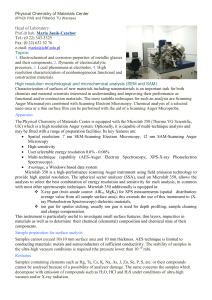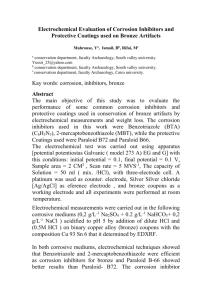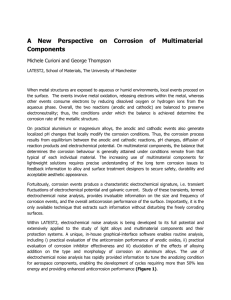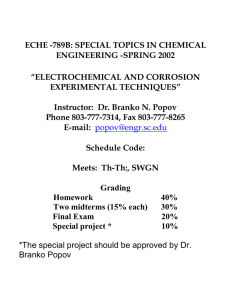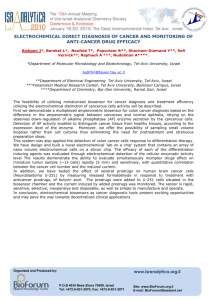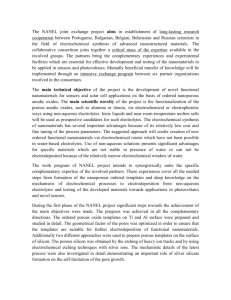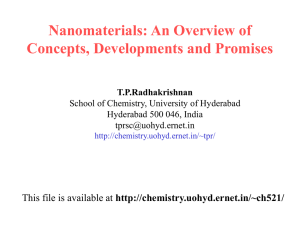Research interest: With the increase of human population, energy
advertisement
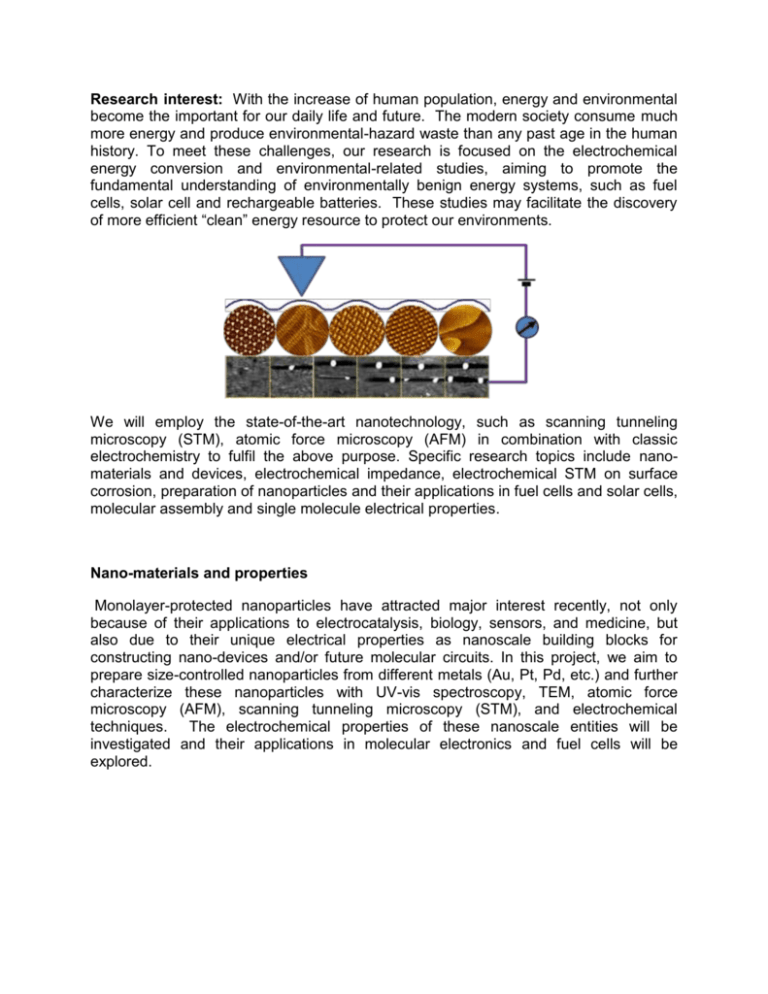
Research interest: With the increase of human population, energy and environmental become the important for our daily life and future. The modern society consume much more energy and produce environmental-hazard waste than any past age in the human history. To meet these challenges, our research is focused on the electrochemical energy conversion and environmental-related studies, aiming to promote the fundamental understanding of environmentally benign energy systems, such as fuel cells, solar cell and rechargeable batteries. These studies may facilitate the discovery of more efficient “clean” energy resource to protect our environments. We will employ the state-of-the-art nanotechnology, such as scanning tunneling microscopy (STM), atomic force microscopy (AFM) in combination with classic electrochemistry to fulfil the above purpose. Specific research topics include nanomaterials and devices, electrochemical impedance, electrochemical STM on surface corrosion, preparation of nanoparticles and their applications in fuel cells and solar cells, molecular assembly and single molecule electrical properties. Nano-materials and properties Monolayer-protected nanoparticles have attracted major interest recently, not only because of their applications to electrocatalysis, biology, sensors, and medicine, but also due to their unique electrical properties as nanoscale building blocks for constructing nano-devices and/or future molecular circuits. In this project, we aim to prepare size-controlled nanoparticles from different metals (Au, Pt, Pd, etc.) and further characterize these nanoparticles with UV-vis spectroscopy, TEM, atomic force microscopy (AFM), scanning tunneling microscopy (STM), and electrochemical techniques. The electrochemical properties of these nanoscale entities will be investigated and their applications in molecular electronics and fuel cells will be explored. A schematic cartoon of monolayerprotected nanoparticles immobilized on a metal or semi-conductor substrate for the electrochemical properties, electron transfer and device study. Initial corrosion and surface passivation of metal materials Electrochemical corrosion of iron (steel) is a ubiquitous phenomenon and the corrosion and aging of iron products can cause severe economic and technical, or even safety problems. Thus, the understanding and further preventing, or at least decreasing the speed of the corrosion processes is vastly important. The study of the initial steps of metal deposition or dissolution on electrodes represents a basic step toward understanding complex surface corrosion and is the key to control corrosion processes. Electrochemical scanning tunneling microscopy (EC-STM) is a powerful tool which combines electro-analytical techniques with surface sensitive scanning probe microscopy (SPM) to investigate surface processes and chemical reactivity at the atomic level. Functional assembly of novel two-dimensional nanomaterials As the miniaturization of electronic components approaches the nanometer scale, new concepts and strategies are essential to overcome the fundamental physical and economic limitations of conventional inorganic silicon technology. Bottom up assembly of well-defined nanoscale building blocks, such as molecules, quantum dots, and nanowires, having key properties controlled by size, morphology and chemical composition on well-defined surfaces (single crystal electrodes) represent an attractive alternative. We will apply a bottom-up strategy to build a series of functional twodimensional (2D) nanomaterials based on novel molecular materials. We expect to fabricate large 2D porous nano-sheets, and these functional 2D nanomaterials will be characterized by STM and AFM, and further used as templates to create highly ordered quantum dots. Electro-catalytic oxidation of CO on platinum electrodes in fuel cells Direct methanol fuel cells (DMFCs) have many advantages over traditional batteries, such as portability and they are a clean (environment-friendly) energy resource, and are regarded as a possible future energy device. However, in the fuel cell reaction process, the reaction intermediate, carbon monoxide (CO), strongly binds to the catalyst surface (Pt) and blocks the active sites, so-called poisoning of the anodic catalyst. This poisoning of the catalyst by CO limits the performance of DMFC and challenges the development of platinum catalyst. We aim to explore the mechanism at the molecular or atomic level using electrochemistry and EC-STM techniques. The study may provide valuable information and experimental guidance to develop high-performance anode catalysts and facilitate the application of DMFC.
